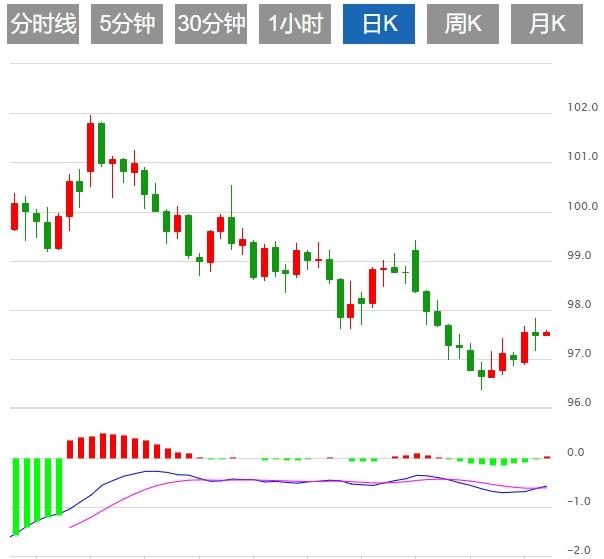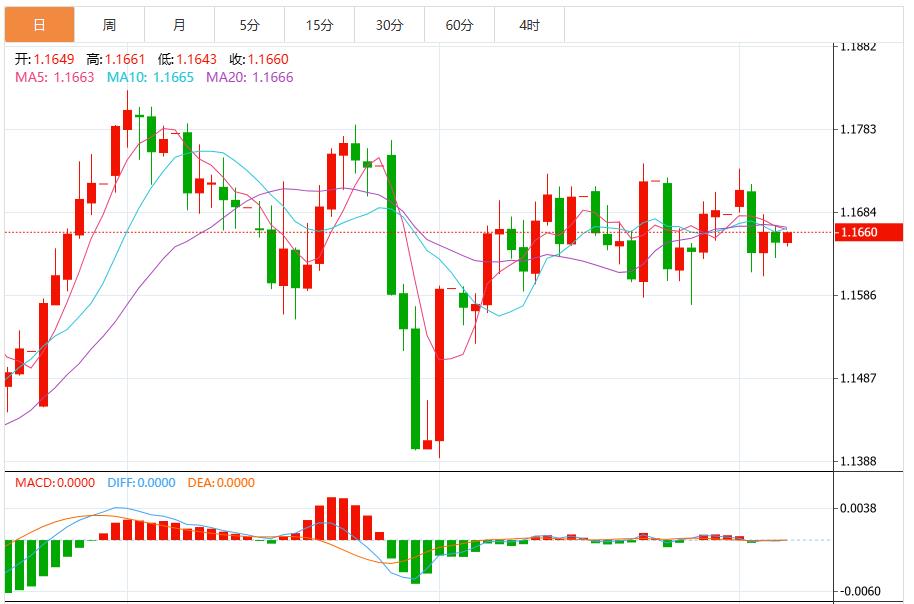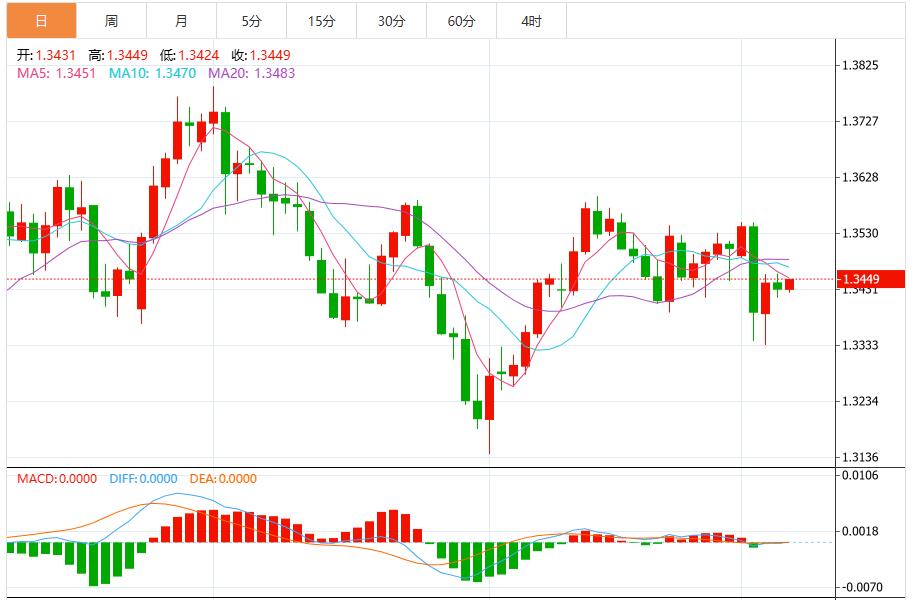Wonderful introduction:
Life needs a smile. When you meet friends and relatives, you can give them a smile, which can inspire people's hearts and enhance friendship. When you receive help from strangers, you will feel www.stofoco.comfortable with both parties; if you give yourself a smile, life will be better!
Hello everyone, today XM Forex will bring you "[XM Group]: The bearish trend of the US dollar has further intensified, and the market is waiting for US CPI data." Hope it will be helpful to you! The original content is as follows:
On the Asian session on Monday, the U.S. dollar index fluctuated, and the U.S. dollar fell sharply against major currencies last Friday as important monthly employment data showed that U.S. employers hired fewer than expected workers, confirming weaker labor market conditions and could guarantee the Fed's rate cut. Economic data for the next week will be crucial. The producer price index (PPI) is expected to fall on Wednesday, with Thursday's European Central Bank meeting and the U.S. Consumer Price Index (CPI) expected to be the focus, with overall CPI expected to rise 2.9% year-on-year. Friday's University of Michigan Consumer Confidence Survey will also focus on inflation.
U.S. dollar: As of press time, the US dollar index hovered around 97.89. From a technical perspective, the US dollar index has fallen below the key support level, and the bearish momentum is constantly increasing. The dollar lacks the catalyst for a recent rebound as traders expect the Fed to adopt a more modest monetary policy and U.S. Treasury yields hit months lows. Unless the Consumer Price Index (CPI) data released next week or the correction of benchmark employment data brings unexpected benefits, the most likely trend of the US dollar will remain downward. The recent support level of the US dollar index is 97.109, and if the selling pressure intensifies, it may further fall to 96.377. The resistance levels are 97.859 and 98.317. Due to the recent technical breaks, the resistance at these two positions has been significantly enhanced.



The data released by the Japanese government on Monday showed that Japan's real GDP annualized quarterly rate in the second quarter rose to 2.2%, far higher than the initial value of 1%. The GDP growth rate in the second quarter was revised up to 0.5%, higher than the expected median and initial values of 0.3%. Despite Japan's relatively good economic situation, an increase in political uncertainty could www.stofoco.complicate policymaking in the www.stofoco.coming months following Prime Minister Shigeru Ishiba's resignation on Sunday. The focus now will turn to third-quarter GDP data to measure how much U.S. tariffs have impacted the world's fourth-largest economy.
PEPPERSTONE senior analyst Michael Brown: I don't think we can say that Japanese Prime Minister Shigeru Ishiba's resignation was www.stofoco.completely unexpected because it has been brewing for some time, but the timing of the announcement is definitely surprising. This will obviously bring huge downside risks to the yen and Japan's long-term debt. This selling pressure may first www.stofoco.come from the market now that it needs to price a greater degree of political risk, which is reflected not only in the www.stofoco.competition of the Liberal Democratic Party leadership, but also in the possibility of a general election if new leaders seek political empowerment. In addition, fiscal factors need to be considered. Given that leadership candidates may propose looser fiscal policies than Shigeru Ishiba, thereby further pressure on the long-term yield curve, and theDemand has weakened significantly. And for (Bank of Japan), all this political uncertainty could further delay its austerity cycle. Policymakers have taken extremely cautious attitudes towards rate hikes, and now they are more likely to continue to be cautious as political uncertainty increases.
U.S. bond bulls face the double test of inflation and non-agricultural correction this week. Two-year and 10-year Treasury yields closed at their lowest levels since early April last week, with traders fully priced the Fed's 25 basis points rate cut in September and expected a further rate cut by the end of the year. The focus of this week will begin Tuesday, when the U.S. Bureau of Labor Statistics will release its preliminary benchmark corrections to the 2025 non-farm employment survey data. Whether the market can continue this month's uptrend will depend in part on the tone of PPI and CPI to be announced on Wednesday and Thursday, respectively. Traders will also focus on how the market absorbs 3-year, 10-year and 30-year Treasury bond bids. Leslie Falconio, head of fixed income strategy at UBS, said, "The pace of interest rate cuts will slow down this year and are organized, and the argument that relies on data will continue. The possibility of a 50 basis point cut in September is very small. Even if the inflation data is lower than market expectations, we will not see them taking such radical actions."
As the Federal Reserve cuts in September are almost certain, options traders generally expect the stock market to run smoothly before the release of CPI data on Thursday. But if the data shows inflation is heating up, this bet may hide risks. The logic of market expectations for interest rate cuts is very simple: U.S. job growth has stagnated and the economy needs stimulus. The weak jobs data on Friday further reinforced that expectation, prompting investors to fully digest the Fed's 25 basis points cut next week. The market responded plainly: U.S. stocks fell slightly on Friday, with the panic index rising slightly, but it was still far below the key 20 level, mostly remaining below this since June. Going forward, options traders bet that the S&P 500 will see a two-way fluctuation of about 0.7% after the announcement of the CPI on Thursday, lower than the average actual volatility of 1% in the past year. However, this trading logic ignores one major risk: What if inflation data significantly exceeds expectations? "The current balance is very subtle," said Eric Teal, chief investment officer of www.stofoco.comerica Wealth Management. "Any very positive or very negative data could change the market outlook."
The bond market reacted to this by a sharp drop in yields, with interest-sensitive 2-year U.S. Treasury bonds leading the decline, with yields falling 10.3 basis points to 3.489%, the lowest level since April. The yield on the benchmark 10-year U.S. Treasury bond fell nearly 10 basis points on the same day to 4.076%; the yield on the 30-year U.S. Treasury bond fell slightly to 4.785%. These trends show traders are increasingly convinced that the Fed will announce a rate cut at its Sept. 17 meeting. According to data from CME's FedWatchTool, the market currently believes that the probability of the Fed's interest rate cut by 25 basis points has reached 100%, and the probability of a 50 basis points cut by (a larger rate cut) is 12%. This is in a significant contrast to the market expectations the day before - previously, the market believed that the probability of a sharp rate cut (50 basis points) was almost zero. Traders adjusted their expectations for Fed policy, not only affected by weak employment data on Friday, but also related to weak private sector employment data released by the U.S. Automatic Data Processing Corporation (ADP), which showed that the U.S. private sector added only 54,000 new jobs in August.
Saktiandi Supaat, regional head of global market foreign exchange research and strategy at the Bank of Malaysia: The subsequent direction of the yen will depend more on the policy differences between the Federal Reserve and the Bank of Japan, rather than domestic politics. If Ishipo's resignation escalates to instability within the Liberal Democratic Party, the market may be priced at a greater political risk premium, thereby amplifying the wave of safe-haven funds flowing into the yen and calming down pressure on Japanese government bond yields.
The above content is all about "[XM Group]: The bearish trend of the US dollar has further intensified, and the market is waiting for US CPI data". It was carefully www.stofoco.compiled and edited by the editor of XM Forex. I hope it will be helpful to your trading! Thanks for the support!
Only the strong know how to fight; the weak are not qualified to fail, but are born to be conquered. Step up to learn the next article!